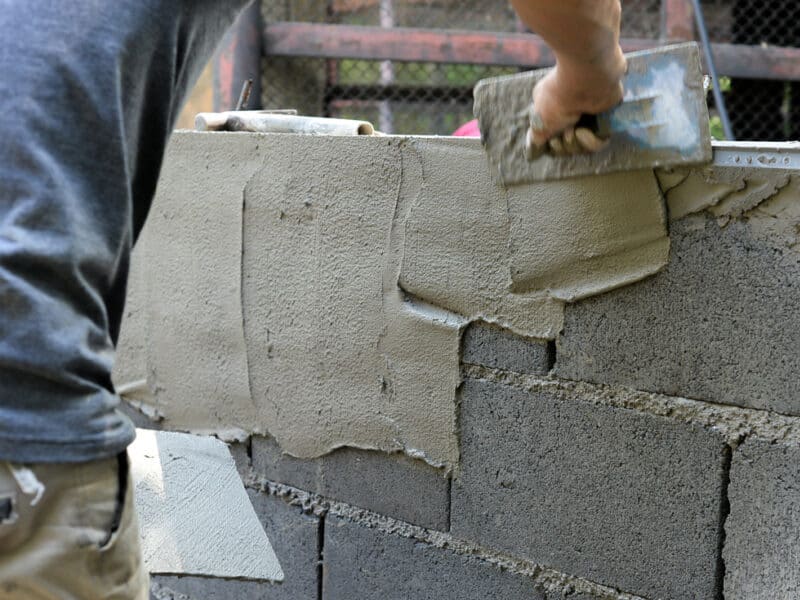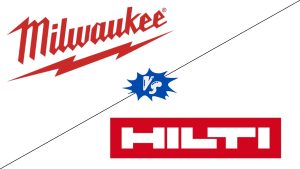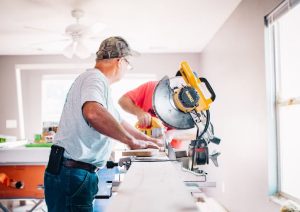Mansory projects require the addition of bricks to build up the property with the addition of strength, looks, and overall integrity.
To secure them, the constructors use helpful products like the mortar mix or cement mixture to make the final look seem finished, but how is the color chosen? Why go for buff mortar, relatively regular ones? Despite different types, Buff mortar vs. regular mortar would offer some of what same strength, but why do we need to compare them?
Too many quires, I guess! But no worries, the primary reason for the comparison is the color choice; as you might be familiar, bricks come in various colors depending upon the property requirements, but what if the brick is red and you add buff mortar? Will that look good? No, I guess! The same applies; using color mortar needs to be compatible with bricks and overall looks, so keeping that in mind, simple vs. buff needs a quiet explanation to better use.

Buff Mortar Vs. Regular Mortar- Quick Differentiation!
Being an expert constructor would make you easily differentiate between Buff mortar and regular mortar, but for commoners, it’s necessary to get the main factor. Both seem a good choice for construction, but adding ingredients in various colors and ratios adds a specific hue to the final mortar, which is our point of concern.
Regular mortar is mainly found in grayish color, while buff mortar ratios and the color of ingredients change the hue. To get a creamy texture, orange sand with white cement gives a buff color. To make it white for other brick colors, use white and make the final leading color. The color variation seems to be the reason to make the outer look feel nice.
What do you mean by mortar?
Mortar, a fixed ratio combination of lime, cement paste sand, along with or without water, opted for construction purposes to improve the bricks and make them fully secured, leading to the final integrated property.
The motor comes in a versatile strength, toughened nature, and better workability that make it best for desired brick or property you want to opt may also go in versatile colors, each defining and adding a unique look to the cementing property. So choose accordingly! By Selecting different shades, you achieve balanced lighting and a perfect frame fulfilling your dream to get the best of art in the form of goof looking exterior and property.
Types
The types of mortar depend upon various factors suitable for your bricks to get stronger and add aesthetic appearance. They seem to work with or without water, and on that basis, they get divided into;
- Dry Mortar
- Wet Mortar
Other types of mortar also exist based on the following;
- Bulk density
- Binding material
- Application types
- Special types
Classifications Based on Brick Colors
- Red bricks– Red Mortar, Gray Mortar, White Mortar
- Black Bricks– Buff Mortar, Gray Mortar, White Mortar
- White Bricks– White Mortar, Buff Mortar, Gray Mortar, Black Mortar
- Gray Bricks– White Mortar, Buff Mortar, Gray Mortar
Types Of Mortar Based On ingredients quantity
| Types | Cement | Lime | Sand |
| Type N for Buff mortar | 3.375 cu ft | 3.375 cu ft | 20.25: cu ft |
| Type M | 5.0625 cu ft | 1.6875 cu ft | 20.25 cu ft |
| Type O | 4.5 cu ft | 2.25 cu ft | 20.25 cu ft |
| Type S | 2.25 cu ft | 4.5 cu ft | 20.25 cu ft |
Regular Mortar or Conventional Mortar
Regular or conventional Mortars are simple types of mortar mixture composed of lime cement and sand in a fixed proportion of 1:3 for cement to sand. You may find it by the name of masonry cement, defining its type and color based on the ingredients added.
Mortar overall act as binding material in constructions for securing bricks and help you build your property with strength, high work-ability, a friendly look, and longevity. Most commonly, gray seems a favorite color for most users to opt for projects similar to the bricks.

Buff Mortar
Buff motor is a color-type-based mortar specified to opt for specific brick colors, including gray, white, etc., to add stability to overall looks. Buff refers to a whitish, grayish color, sometimes with a slight yellowish touch for other brick types. The color hue itself adds a yellowish tone but requires a creamy or lighter tone, then white sand or cement adds their worth to maintain the desired color.
The buff mortar also adds the same strength and workability and does contain cement, graded sand, and water, but the final color ends up with buff types based on the sand and cement’s color. Mortar properties for both types remain the same; all that matter is the final color required for the bricks.
The buff mortar may be available in buff mortar N, S, O, and M types based on the ingredient’s quantity adding a particular strength and look.
Comparison Table for Buff Mortar Vs. Regular Mortar
| BUFF MORTAR VS REGULAR MORTAR | |
| Buff Mortar | Regular Mortar |
| Composition | |
| Masonry cement, graded sand, water | Cement, lime, sand |
| Color | |
| Buff | Grayish most favorite |
| Function | |
| For repair purposes in between and sides of bricks | For repair purposes in between and sides of bricks |
| Suitability | |
| White, gray, and black bricks | Gray, black |
| Types | |
| Based on cement and sand color | Multiple types based on brick color |
| Features | |
| High workability, robustness, and last longer | High workability, strong |
| Cost | |
| Average cost 17$ per bag | Average price 7$ per bag |
| Strength | |
| High bond strength | High bond strength |
How To Mix Buff Mortar Vs. Regular Mortar
To get a sandstone or buff-colored mortar mix, go with ordinary or white-colored cement. A long buff tone has cement and sand in a ratio of 5:1. For buff, the lime isn’t necessary; instead, a plasticizer is enough to get the primary hue with better strength. Or you can opt for the N types mixture to get the desired one limiting the lime. The regular one goes with a fixed proportion of 1:3 for cement to sand to get the desired mortar.
The mixing and preparation would be the same; all that matters is ingredients, quantities, and mixing rates to achieve the hue of your choice. Be careful in that case and consult an expert to finalize the end hue because most get the gray color even following the same proportion. The buff mortar can use white cement if the result isn’t getting the desired one.
Procedure
Before starting the procedure, you need to take some steps to motor makes suitable for use.
- First, take a bucket and mix in the dry form in the mortar.
- If it is a premixed mixture don’t need to calculate the ingredients.
- But in the case of different ingredients, you need to calculate it accurately to get the desired consistency of the mortar.
- Calculate the requirement needed for the buff motor vs. the regular engine.
- Keeping that in mind, calculate the master formula.
- Now that you are ready for the mixing ensure the large mixing is pre-wet.
- To get desired consistency, add adequate portions of water, not too much, not too low.
- Keep in mind to maintain the consistency like a slippery one but maintain its shape as well.
- Properly mix the mortar mixture using tools and check with the brick color to get the desired hue compatible with your property, adding aesthetic appearance and an overall great look.
- Keep adding water until you get the required consistency.
Tips
- Maintain safety measures.
- Wear gloves, goggles, and proper clothing so that you get prevented from the material not safe for the skin.
- Always use a sealed cement bag to make the best and most fresh motor mixture.
- Purchase from the best seller in the town.
- Prepare the mortar mixture when required at the spot because a mortar remains suitable for 90 minutes, and after that, it is of no use, and characteristics seem lost.
Cost Comparison
Budget always plays a role in comparison because users always want something affordable and of good quality to add to their property. Compared to the buff mortar, The Normal Mortar seems cheap for too many users at $7 per bag, while the buff mortar is expensive. Because of its coloring consistency and quality per bag, you would cost around $17. The cost also varies based on the graphical location, the quality of the mortar, color requirement, type, and strength required.
Conclusion
Did you get the significant differentiation between Buff mortar vs. regular mortar? Always choose the one based on the brick’s color and suitability and the cost check with stability, longevity, and quality of material ingredients.
Do not forget to purchase from an authentic seller to get the best product. The mortar requires adequate mixing and ingredients ratio to get the final result hue suitable for the bricks, so don’t try yourself; consult experts to help you complete the task! Share your experience and the type you selected for your property build-up. I will be glad to hear your story and share it with the world!



